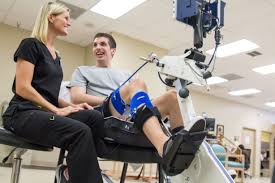Please note that this page is about the roles and responsibilities of physiotherapists / physical therapists (PTs) in the emergency department, once the patient has been seen and admitted by triage.
For a look at the roles and responsibilities of PTs within the triage system, click here.
Introduction
Physiotherapy or physical therapy provision in the hospital emergency department (ED) is a growing area of practice. Physical therapists can help patients start on the road to recovery early in the injury process, facilitating the possibility to improve outcomes in certain injury types.[1]. Patients receiving emergency department physical therapy (ED PT) benefit from the physical therapist’s expertise in musculoskeletal, respiratory and vestibular conditions. This primary contact consultation can help to ease the burden of delay in treatment in the busy ED environment as well as decrease hospital length of stay and resources usage.
The emergency department physiotherapist would typically be assigned the following types of presentations from triage:
– soft tissue injuries (sprains and strains)
– simple fractures
– mobility assessment
– stable respiratory conditions or respiratory exacerbations
– vertigo
– secondary care following clinician assessment
The range of assessment that can be conducted by physiotherapists varies depending on the location and experience of the therapist. Some departments will allow physiotherapists to take over care of a patient directly from triage (primary contact) whereas other locations may require clinician assessment before treatment by physiotherapy (secondary contact via referral). In terms of requesting imaging or providing intervention, this can also vary greatly. In some locations in Australia, suitably qualified and competent ED PTs may request imaging and even prescribe medications whereas at other locations, the patient is to be handed back to the speciality clinician with findings to dictate the pathway of care.
Common interventions that are provided by physiotherapists in ED include:
1. Patient education about their injury or illness and the trajectory of healing or condition management
2. Instruction in bed mobility, transfers and walking
3. Instruction in using assistive devices such as a walking stick, crutches or a walker
4. Prescribe exercises to help treat conditions
5. Provide pain relief such as ice or heat for injury and compression bandaging
6. Provide suitable immobilisation for fractures and ligamentous injury such as backslabs, moon boots and splints [2]
References


